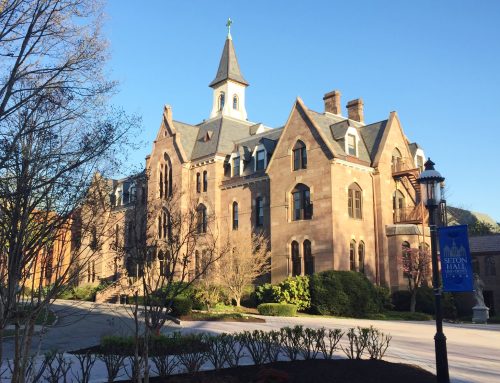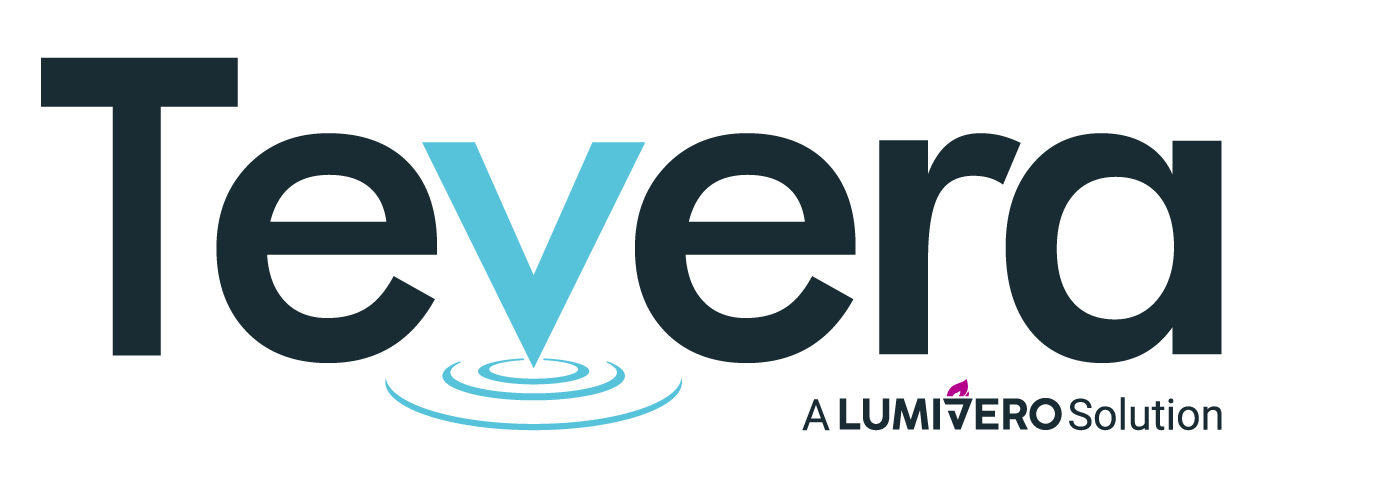How Social Work Programs Can Simplify CSWE Reaccreditation
Reaccreditation is crucial to the longevity and success of any program but is especially important for behavioral health programs. But gathering the necessary documentation and planning the full process often leaves faculty and staff members exhausted and frustrated.
We sat down with a social worker who has worked in the field providing direct services, in academia managing internship programs, in the tech world working for an internship software company ex-academic, and currently as an EdTech consultant to discuss the headache that is reaccreditation. We dug into her own experiences navigating CSWE reaccreditation while working as a faculty and staff member as well as what she’s seen while being a consultant.
Q: What are the most challenging parts of the re-accreditation process?
A: There are many challenging parts of reaccreditation. One of the great things about academia is that everyone has their own ideas about how to navigate complex things. But, when it comes to reaccreditation, many ideas and perspectives can draw out an already arduous process.
In addition, the bigger and more complex the program the harder it is to get everybody on the same page. Finding ways to communicate what needs to be done and how to do it in a palatable fashion is a beginning and crucial step. Building open lines of communication is another key step. Course mapping can also become an arduous task since many courses touch on several competencies and decisions need to be made regarding which courses will be used to measure which competencies and how. Different faculty will bring different perspectives to this process so it may take time to come to consensus.
Q: Beyond the time commitment, knowing what to do, when to do it, etc. what other looming challenges might a program face with re-accreditation?
A: The Accreditation Standards might change.
In a prior position, we were planning for our reaccreditation visit and we were pretty far along and then the standards changed. We had to decide if we were going to stay with the old standards or adapt everything according to the new standards. We ended up going to the new standards and delaying our visit by a year.
And it’s not just accreditation standards that change. For example, programs add online and hybrid programs and change specializations, and concentrations. Such changes can lead to curriculum changes which in turn lead to change regarding what and how outcomes are measured and reported. Learning objectives, rubrics, and forms might also change as a result. These changes impact what and how they measure and report outcomes for reaccreditation.
So really, one of the biggest challenges is that things change on both sides and any change has ripple effects.
Q: Yeah. I’m getting a headache just thinking about it. Is there a go-to resource that programs can check these new regulations that might say, “It was this, now it’s this.”
A: Yes. For CSWE accreditation and reaccreditation, their website has all of that.
In addition, now instead of submitting volumes of paper, programs can utilize CSWE’s online template when drafting their accreditation document. This template is helpful because different people can independently add their parts to the larger document and collaborate with others on other parts.
The last section of the CSWE EPA’s relates to measuring outcomes and this is where software, like Tevera can assist. This section scares people.
Q: Why is it scary?
A: It can be hard to see what exactly you should be doing. And when you don’t have a clear understanding of what to measure or how to measure it, that quickly becomes overwhelming. Measures from many different courses need to be aggregated in very specific ways.
Q: Why is there so much confusion if these things are measured often?
A: First, there are many different ways to measure outcomes. Most schools will do two measurements for each competency, one in the field placement and one in a course.
But, they don’t have to do it that way. For example, some schools do a test at the end or ask students to create a portfolio to measure competencies. All schools have to make decisions on how they’re going to measure the competencies and then they have to define the forms, assignments or test questions that will be used to prove the student has competency in each area.
There’s a lot of thought before you get to crunching the numbers that is hard.
Q: How long does the re-accreditation process take?
A: It’s a seven-year cycle. Once a university gets reaccredited, then they usually take a huge sigh of relief. They are tired and often want to ignore accreditation for a year or two.
However, ideally the measurement systems are in place and they will continue measuring every year so that the next time CSWE visits they have seven years of data. The more automated things are, the more likely that is to happen. The less curriculums and accreditation standards change, the more likely that is to happen.
Regardless of how things unfold, schools should begin thinking about and planning for reaccreditation 3 years in advance of their site visit.
The first year is spent mapping courses and defining how competencies will be measured, the second year competencies are measured and the final year everything is pulled together and the document is submitted.
Thank you for your time and sharing your expertise with us!
SOLUTIONS
RELATED POSTS
PRODUCT OVERVIEW
See how Tevera can elevate your program.
How Social Work Programs Can Simplify CSWE Reaccreditation
Reaccreditation is crucial to the longevity and success of any program but is especially important for behavioral health programs. But gathering the necessary documentation and planning the full process often leaves faculty and staff members exhausted and frustrated.
We sat down with a social worker who has worked in the field providing direct services, in academia managing internship programs, in the tech world working for an internship software company ex-academic, and currently as an EdTech consultant to discuss the headache that is reaccreditation. We dug into her own experiences navigating CSWE reaccreditation while working as a faculty and staff member as well as what she’s seen while being a consultant.
Q: What are the most challenging parts of the re-accreditation process?
A: There are many challenging parts of reaccreditation. One of the great things about academia is that everyone has their own ideas about how to navigate complex things. But, when it comes to reaccreditation, many ideas and perspectives can draw out an already arduous process.
In addition, the bigger and more complex the program the harder it is to get everybody on the same page. Finding ways to communicate what needs to be done and how to do it in a palatable fashion is a beginning and crucial step. Building open lines of communication is another key step. Course mapping can also become an arduous task since many courses touch on several competencies and decisions need to be made regarding which courses will be used to measure which competencies and how. Different faculty will bring different perspectives to this process so it may take time to come to consensus.
Q: Beyond the time commitment, knowing what to do, when to do it, etc. what other looming challenges might a program face with re-accreditation?
A: The Accreditation Standards might change.
In a prior position, we were planning for our reaccreditation visit and we were pretty far along and then the standards changed. We had to decide if we were going to stay with the old standards or adapt everything according to the new standards. We ended up going to the new standards and delaying our visit by a year.
And it’s not just accreditation standards that change. For example, programs add online and hybrid programs and change specializations, and concentrations. Such changes can lead to curriculum changes which in turn lead to change regarding what and how outcomes are measured and reported. Learning objectives, rubrics, and forms might also change as a result. These changes impact what and how they measure and report outcomes for reaccreditation.
So really, one of the biggest challenges is that things change on both sides and any change has ripple effects.
Q: Yeah. I’m getting a headache just thinking about it. Is there a go-to resource that programs can check these new regulations that might say, “It was this, now it’s this.”
A: Yes. For CSWE accreditation and reaccreditation, their website has all of that.
In addition, now instead of submitting volumes of paper, programs can utilize CSWE’s online template when drafting their accreditation document. This template is helpful because different people can independently add their parts to the larger document and collaborate with others on other parts.
The last section of the CSWE EPA’s relates to measuring outcomes and this is where software, like Tevera can assist. This section scares people.
Q: Why is it scary?
A: It can be hard to see what exactly you should be doing. And when you don’t have a clear understanding of what to measure or how to measure it, that quickly becomes overwhelming. Measures from many different courses need to be aggregated in very specific ways.
Q: Why is there so much confusion if these things are measured often?
A: First, there are many different ways to measure outcomes. Most schools will do two measurements for each competency, one in the field placement and one in a course.
But, they don’t have to do it that way. For example, some schools do a test at the end or ask students to create a portfolio to measure competencies. All schools have to make decisions on how they’re going to measure the competencies and then they have to define the forms, assignments or test questions that will be used to prove the student has competency in each area.
There’s a lot of thought before you get to crunching the numbers that is hard.
Q: How long does the re-accreditation process take?
A: It’s a seven-year cycle. Once a university gets reaccredited, then they usually take a huge sigh of relief. They are tired and often want to ignore accreditation for a year or two.
However, ideally the measurement systems are in place and they will continue measuring every year so that the next time CSWE visits they have seven years of data. The more automated things are, the more likely that is to happen. The less curriculums and accreditation standards change, the more likely that is to happen.
Regardless of how things unfold, schools should begin thinking about and planning for reaccreditation 3 years in advance of their site visit.
The first year is spent mapping courses and defining how competencies will be measured, the second year competencies are measured and the final year everything is pulled together and the document is submitted.
Thank you for your time and sharing your expertise with us!
How Social Work Programs Can Simplify CSWE Reaccreditation
Reaccreditation is crucial to the longevity and success of any program but is especially important for behavioral health programs. But gathering the necessary documentation and planning the full process often leaves faculty and staff members exhausted and frustrated.
We sat down with a social worker who has worked in the field providing direct services, in academia managing internship programs, in the tech world working for an internship software company ex-academic, and currently as an EdTech consultant to discuss the headache that is reaccreditation. We dug into her own experiences navigating CSWE reaccreditation while working as a faculty and staff member as well as what she’s seen while being a consultant.
Q: What are the most challenging parts of the re-accreditation process?
A: There are many challenging parts of reaccreditation. One of the great things about academia is that everyone has their own ideas about how to navigate complex things. But, when it comes to reaccreditation, many ideas and perspectives can draw out an already arduous process.
In addition, the bigger and more complex the program the harder it is to get everybody on the same page. Finding ways to communicate what needs to be done and how to do it in a palatable fashion is a beginning and crucial step. Building open lines of communication is another key step. Course mapping can also become an arduous task since many courses touch on several competencies and decisions need to be made regarding which courses will be used to measure which competencies and how. Different faculty will bring different perspectives to this process so it may take time to come to consensus.
Q: Beyond the time commitment, knowing what to do, when to do it, etc. what other looming challenges might a program face with re-accreditation?
A: The Accreditation Standards might change.
In a prior position, we were planning for our reaccreditation visit and we were pretty far along and then the standards changed. We had to decide if we were going to stay with the old standards or adapt everything according to the new standards. We ended up going to the new standards and delaying our visit by a year.
And it’s not just accreditation standards that change. For example, programs add online and hybrid programs and change specializations, and concentrations. Such changes can lead to curriculum changes which in turn lead to change regarding what and how outcomes are measured and reported. Learning objectives, rubrics, and forms might also change as a result. These changes impact what and how they measure and report outcomes for reaccreditation.
So really, one of the biggest challenges is that things change on both sides and any change has ripple effects.
Q: Yeah. I’m getting a headache just thinking about it. Is there a go-to resource that programs can check these new regulations that might say, “It was this, now it’s this.”
A: Yes. For CSWE accreditation and reaccreditation, their website has all of that.
In addition, now instead of submitting volumes of paper, programs can utilize CSWE’s online template when drafting their accreditation document. This template is helpful because different people can independently add their parts to the larger document and collaborate with others on other parts.
The last section of the CSWE EPA’s relates to measuring outcomes and this is where software, like Tevera can assist. This section scares people.
Q: Why is it scary?
A: It can be hard to see what exactly you should be doing. And when you don’t have a clear understanding of what to measure or how to measure it, that quickly becomes overwhelming. Measures from many different courses need to be aggregated in very specific ways.
Q: Why is there so much confusion if these things are measured often?
A: First, there are many different ways to measure outcomes. Most schools will do two measurements for each competency, one in the field placement and one in a course.
But, they don’t have to do it that way. For example, some schools do a test at the end or ask students to create a portfolio to measure competencies. All schools have to make decisions on how they’re going to measure the competencies and then they have to define the forms, assignments or test questions that will be used to prove the student has competency in each area.
There’s a lot of thought before you get to crunching the numbers that is hard.
Q: How long does the re-accreditation process take?
A: It’s a seven-year cycle. Once a university gets reaccredited, then they usually take a huge sigh of relief. They are tired and often want to ignore accreditation for a year or two.
However, ideally the measurement systems are in place and they will continue measuring every year so that the next time CSWE visits they have seven years of data. The more automated things are, the more likely that is to happen. The less curriculums and accreditation standards change, the more likely that is to happen.
Regardless of how things unfold, schools should begin thinking about and planning for reaccreditation 3 years in advance of their site visit.
The first year is spent mapping courses and defining how competencies will be measured, the second year competencies are measured and the final year everything is pulled together and the document is submitted.



















